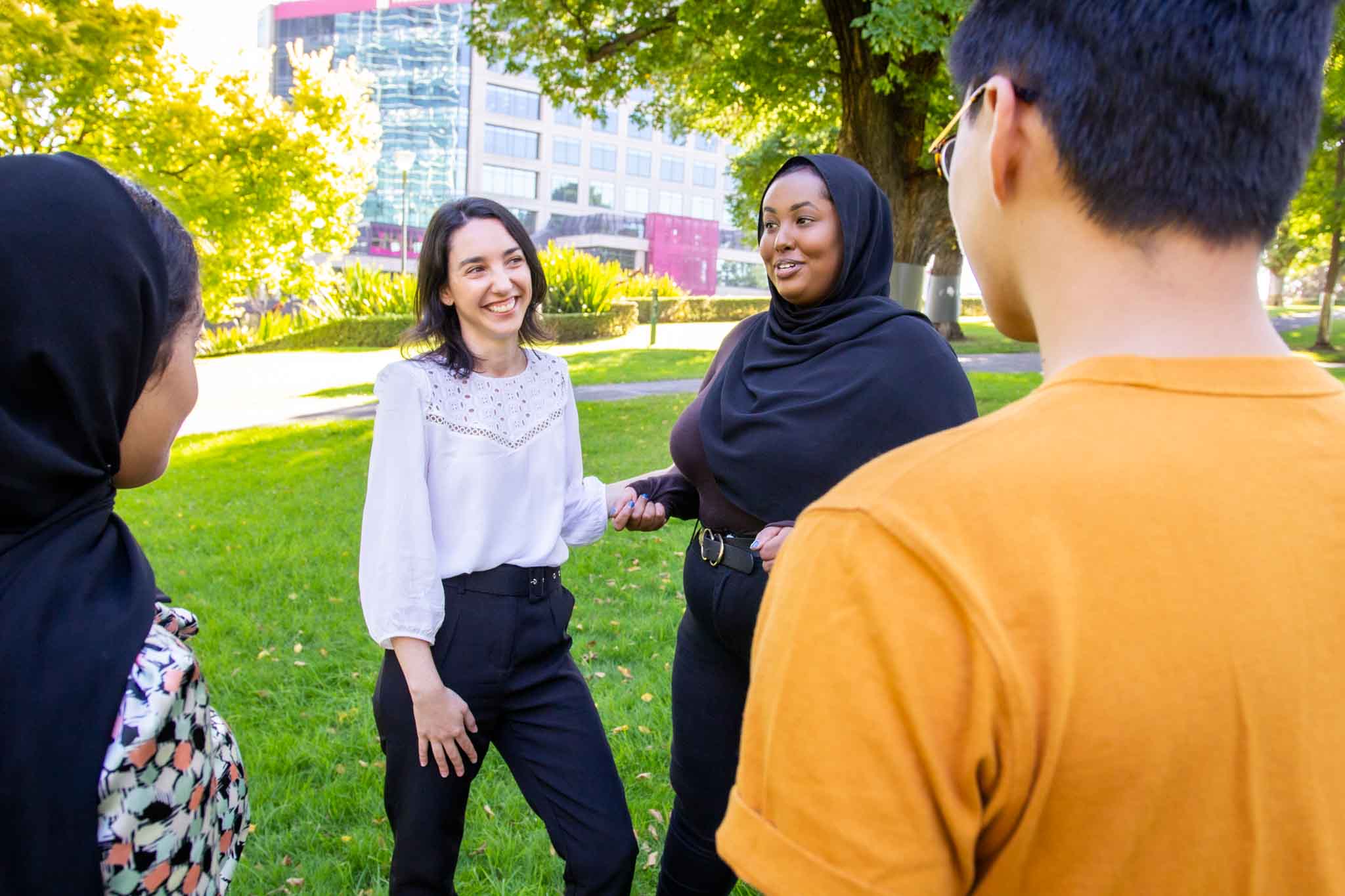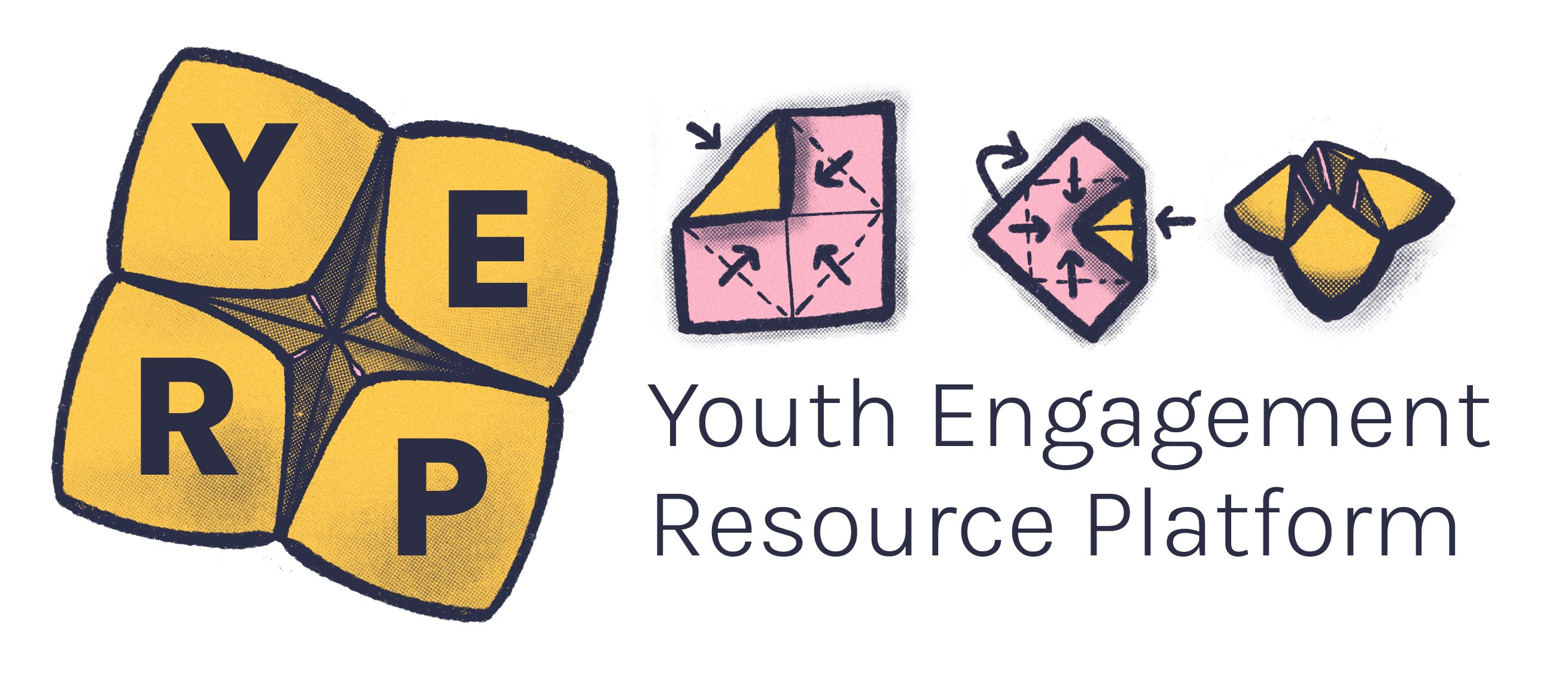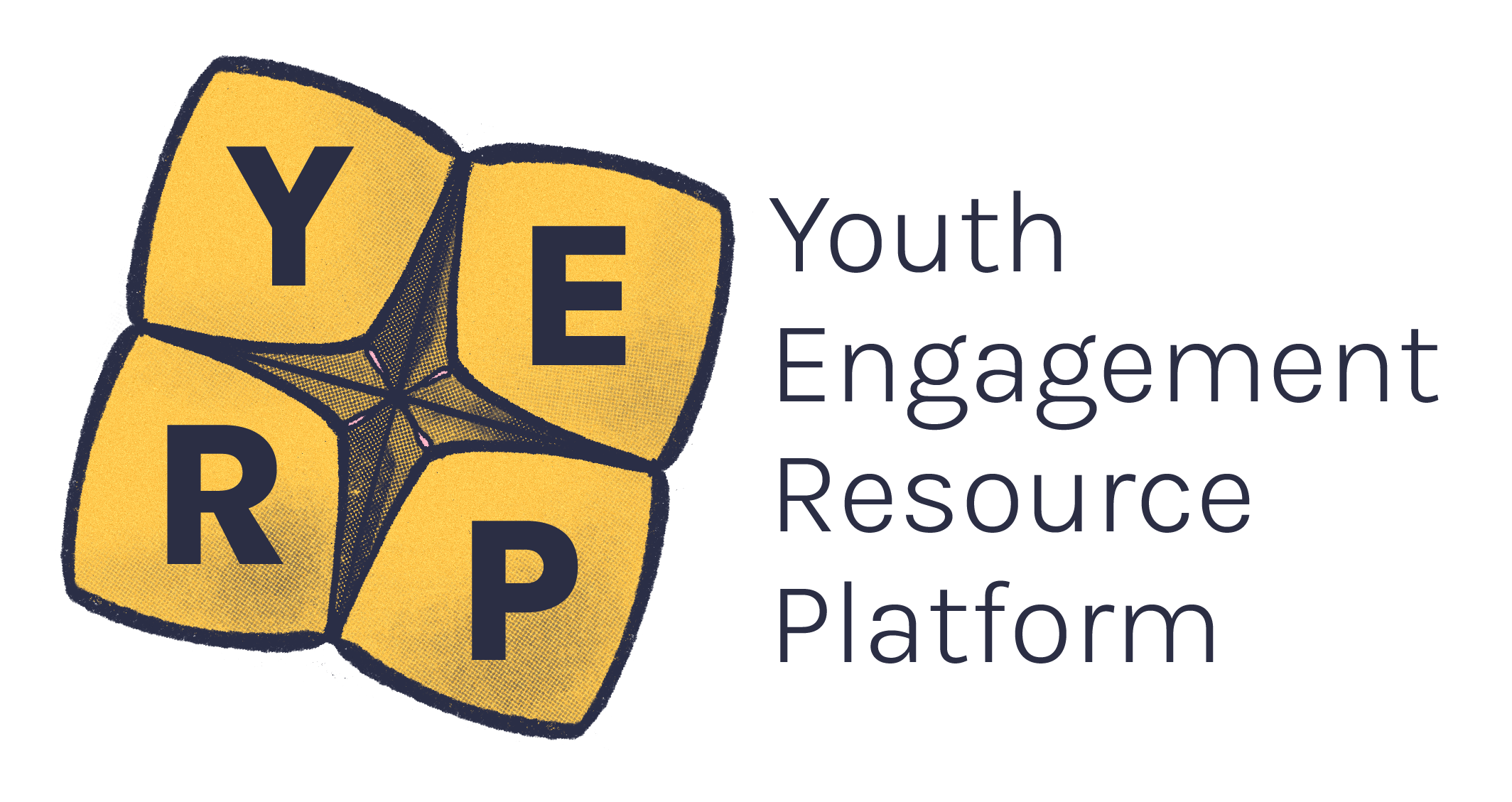A safe space is an environment in which a young person can feel confident they will not be exposed to discrimination, criticism, harassment, or any other emotional or physical harm.1
Victorian Child Safe Standard number 9 states that safe physical and online spaces “promote safety and wellbeing while minimising the opportunity for children and young people to be harmed”.
Creating safe spaces will help you build healthy, professional and positive relationships with young people. What constitutes a ‘safe space’ will be different for everyone. Check in with the young people you work with to ensure you can maintain a safe space in a responsive way.2
Speaker 1
As a youth worker, you want to make the spaces that you work in safe for young people.
Let's see how they think you should do that.
Mila, what makes you feel safe when coming into these spaces?
Mila
I think knowing that the youth workers have thought about access needs and stuff like there being time for having a break, and just relaxing.
That makes me feel really considered.
Speaker 1
Kano, what makes you feel safe when coming into these spaces?
Kano
Yeah, for me, it's, it's the vibe.
When I'm walking into a space I want to feel like I'm accepted there, I belong there.
And I think that starts by, when a youth worker sees me they're smiling at me, they come and say hi, not awkwardly you know, letting me sit by myself.
I think just being there for me, or I know there's someone there for me.
Trauma-informed approaches acknowledge the ongoing impact trauma can have on individual’s social, emotional, psychological, and physical wellbeing. A trauma-informed approach is key to establishing safe spaces with young people as it considers how past experiences shape feelings of safety in the present.3
Key principles of trauma-informed approaches
Safety
Prioritise physical and emotional safety in all interactions and environments. Create spaces where young people feel secure and free from harm.3
Trustworthiness and transparency
Build trust through clear communication, consistency, and transparency. Be open about processes, expectations, and available resources so that young people can make informed decisions.3
Empowerment and collaboration
Involve young people in decision-making and encourage them to have a say in their care. Recognise their strengths and resilience, and collaborate on pathways forward, treatment plans and goals.2
Choice and control
Offer choices whenever possible, giving young people some control over their environment and treatment. This helps restore a sense of agency that may have been lost due to trauma. Be honest about what options are actually available.
In workshops and consultations it should be made clear before and during the session that participation and activities are voluntary and participants are free to leave at any time.2
Tip: Sometimes people will only discuss certain issues with certain people based on how comfortable they feel and whether it is the appropriate person. For example, a young woman may only feel comfortable discussing disclosures of abuse with a female support worker.
Cultural sensitivity
Recognise and respect cultural differences and individual preferences. Tailor care/support to individuals' cultural, social, and linguistic needs.1
Understanding trauma's impact
Understand the potential effects of trauma on behaviour, emotions, and coping mechanisms. Avoid making assumptions or judgements about individuals' reactions.2
Always consider the appropriateness and safety of asking young people to share lived experience, both individually and in groups. Are you equipped to manage any trauma that is triggered by the work you are doing?
Tip: Consider the questions you ask young people very carefully. If you don't need to know the details of the young person’s lived experience then don’t ask them questions that encourage them to share their trauma.
Further resources and training on trauma-informed practice
- Blue Knot Foundation
- Berry Street
- Emerging Minds
- Orygen
- Australian Childhood Foundation Professionals
Tip: Help young people understand the difference between emotional trauma and general discomfort. Remind them that it's sometimes important for us to be a little uncomfortable, discuss difficult topics, and have hard but necessary conversations in order to promote change.
A photo of two youth workers sitting down, having a conversation.

Physical safety includes a young person’s sense of their personal physical safety, as well as the security and safety of their environment.
Ways to create a safe physical environment
Welcoming atmosphere
Create an inviting atmosphere through colours, decor, and layout. Make the space feel warm and welcoming. Plants play a big part of a welcoming space, make sure to have lots of them!
Neutral and non-intrusive decor
Choose decor that is neutral, non-intrusive, and comfortable. Avoid overwhelming or triggering visuals that could cause distress.
Clear signage
Display clear signs indicating exits, emergency procedures, and important resources. All signage should be in simple language using images/icons where appropriate to improve accessibility.
Physical comfort
Ensure the space is comfortable and accommodating. Provide seating options that suit different preferences and needs.
Appropriate lighting
Ensure appropriate lighting in the space to create a welcoming, safe and relaxed atmosphere.
Adequate lighting helps prevent accidents and promotes a sense of security. Avoid lighting that is too harsh, as it can create a clinical atmosphere or be overwhelming to those sensitive to light.
Appropriate sound
Consider the noise of the natural environment of the space.
If there’s usually disruptive noise (traffic, ongoing construction works), think about what ambient sound would be appropriate for a calming environment, or if you have earplugs or headphones available for people to use.
Private areas
Designated areas where young people can have confidential conversations with youth workers, counselors, or mentors. Ensure these spaces are free from interruptions. You might also have a separate room for young people to access if they need a break.
Inclusive and accessible
Make the space inclusive by considering access needs. Ensure ramps, handrails, and other accommodations are available as needed. Consider diversity when choosing decor.
Posters and leaflets
Display youth-friendly materials in support of the young people who use your services such as a Rights of the Child Poster or youth-friendly versions of your Child Safe policy and Child Safe Code of Conduct.
Tip: Involve young people in the design and layout decisions of a space wherever possible. Ask them what they like, don’t like, and their suggestions for improvement.
A small group of people sitting and laying on the floor while talking

The same principles for creating safe spaces in person should be applied when conducting online youth work as well.
- Ensure details are confidential. If young people have to register for an event, only ask for the information you need and make sure their personal details are stored privately.
- Establish what child safe practices are in place at the beginning of online events, so young people understand your responsibilities and what support is available. For example, stating who the child safe officers are online, and if a young person needs to turn their camera off, ask them to let you know in the chat so you know they are safe.
- Ensure materials are accessible to everyone. For example, interpreters, text and image descriptions that can be read by screen readers.
- Encourage young people to find an environment which is private, or use headphones where available, to ensure confidentiality throughout the online session.
- Have options for breakout rooms and encourage young people to let you know if they need a screen break or content break.
- Use content warnings for sensitive material.
There are complexities that arise from having multiple intersecting identities and this can result in young people feeling uncomfortable in some services that only support one facet of their identity.
Making a space welcoming for all young people and their intersectional identities is therefore really important.
Check out Youth Disability Advocacy Service's guide for creating inclusive and accessible spaces.
Accessibility
Tips for improving accessibility include:
- Ask others what their access needs may be; never assume!
- Be flexible, willing, and proactive in removing barriers.
- Ensure spaces can accommodate mobility devices and if spaces between furniture are wide enough.
- Provide information in plain English language, and present it in multiple ways. For example; Braille, large print, audio, electronic, and ensure videos are captioned.
- Send information to people in advance so people can prepare for situations and feel comfortable.
- Ensure there are multiple ways people can contact you. This includes phone, email and online communication.
- Use pronouns to introduce yourself and never assume someone’s identity.4
Culturally safe spaces
Creating a culturally safe space means acknowledging peoples’ diverse cultures, intersecting identities, and the implications for young people’s wellbeing when navigating different cultural identities.
Creating a culturally safe space can include:
- Having staff complete cultural safety training so their language, attitudes and behaviours are respectful towards others.
- Acknowledging Country and the Traditional Owners of the land you are on.
- Incorporating different models of learning, teaching, working, and healing.
- Including the voices of young people from different cultures in order to capture a range of perspectives.
- Having staff who are representative of your client group.
Further resources for inclusive practice:
- ‘Deadly Story’, a resource aimed at supporting Aboriginal children
- Cultural safety for Aboriginal children
- Safety of children with a disability
- Safety of children from culturally and linguistically diverse backgrounds
- A guide for creating a Child Safe Organisation
Close-up of a young person wearing a sunflower lanyard, representing invisible disabilities.

Safety extends to the way young people are treated. Showing unconditional positive regard and upholding a strengths-based approach demonstrates to a young person that they’re in a safe space, where they will be listened to and supported.
Using a strengths-based approach to create a safe space may look like:
Positive framing
Frame conversations and interactions in a positive and affirming manner. Highlight strengths and accomplishments to foster a sense of self-worth.5.
Empowerment
Empower young people by involving them in decision-making, goal-setting, and problem-solving processes. Explain how things work and how they can influence decisions. Allow them to take an active role in shaping their experiences.6
Collaboration
Collaborate with young people as partners in their own growth and development. Respect their insights, preferences, and ideas.1
Person-centred approach
Tailor your interactions to the individual needs, interests, and aspirations of each young person. Recognise their uniqueness and treat them as individuals.5
Promoting self-expression
Create a space where young people can freely express themselves, their thoughts, feelings, and opinions. Validate their experiences and perspectives.5
Encouraging reflective practice
Use reflective practice in your work/team. Encourage young people to reflect on their experiences, strengths, and growth. This promotes self-awareness and a sense of agency and empowers young people to identify their own areas of growth.5
Strengths-based language
Use language and foster confidence and self-esteem in young people that focuses on strengths, capabilities, and potential. Avoid labelling young people by their challenges.5
Respectful and non-judgmental attitude
Approach young people with respect and without judgement. Challenge the labels that other people might use when referring to the lived experience of young people.
Fostering connection and belonging
Create a sense of belonging and connection within your interactions and programs. When young people feel valued and part of a community, they are more likely to feel safe.5
Celebrating progress and achievements
Acknowledge and celebrate the achievements, milestones, and growth of young people. Positive reinforcement enhances a sense of accomplishment.5
Group of young people with a youth worker chatting in a park on a sunny day.

- My Peer Toolkit. (n.d). Creating safe spaces. https://mypeer.org.au/design-implementation/creating-a-safe-space/
- Australian Human Rights Commission. (n.d). Racism Nobody Wins, Guidelines for working with a trauma informed approach. https://humanrights.gov.au/sites/default/files/ahrc_sr_2021_8_trauma-informed_approach_a4_r2_0.pdf
- Center for Health Care Strategies. (2021). What is trauma-informed care?. https://www.traumainformedcare.chcs.org/what-is-trauma-informed-care/
- Youth Disability Advocacy Service. (n.d). How to Ensure Space are Accessible and Inclusive. https://www.yacvic.org.au/ydas/get-involved/youngleaders/how-to-ensure-spaces-are-accessible-and-inclusive/
- Stoerkel, E. (2019). ‘What is a strengths-based approach?’. PositivePsychology.com. https://positivepsychology.com/strengths-based-interventions/
- University of Michigan. (2024). An Introduction to Content Warnings and Trigger Warnings. An-Introduction-to-Content-Warnings-and-Trigger-Warnings-Draft.pdf (umich.edu)
Related Topics
A note on cultural safety: For the purposes of YERP and based off feedback from our co-designers, we use ‘cultural safety’ as a broad definition to include young people from all diverse backgrounds, not only focusing on Aboriginal and Torres Strait Islander young people. For more information, please see our ‘explainer’ for the Diversity and Inclusion topic for youth sector workers.





